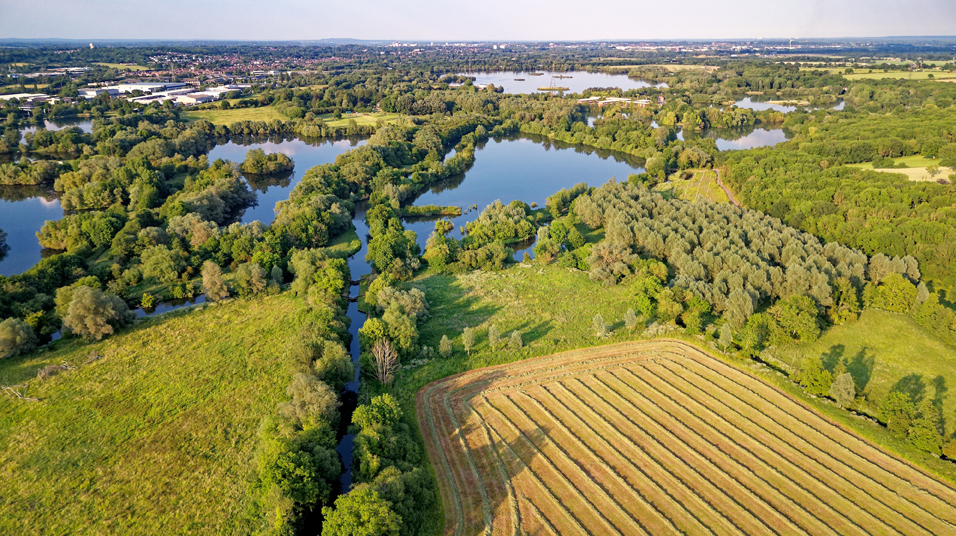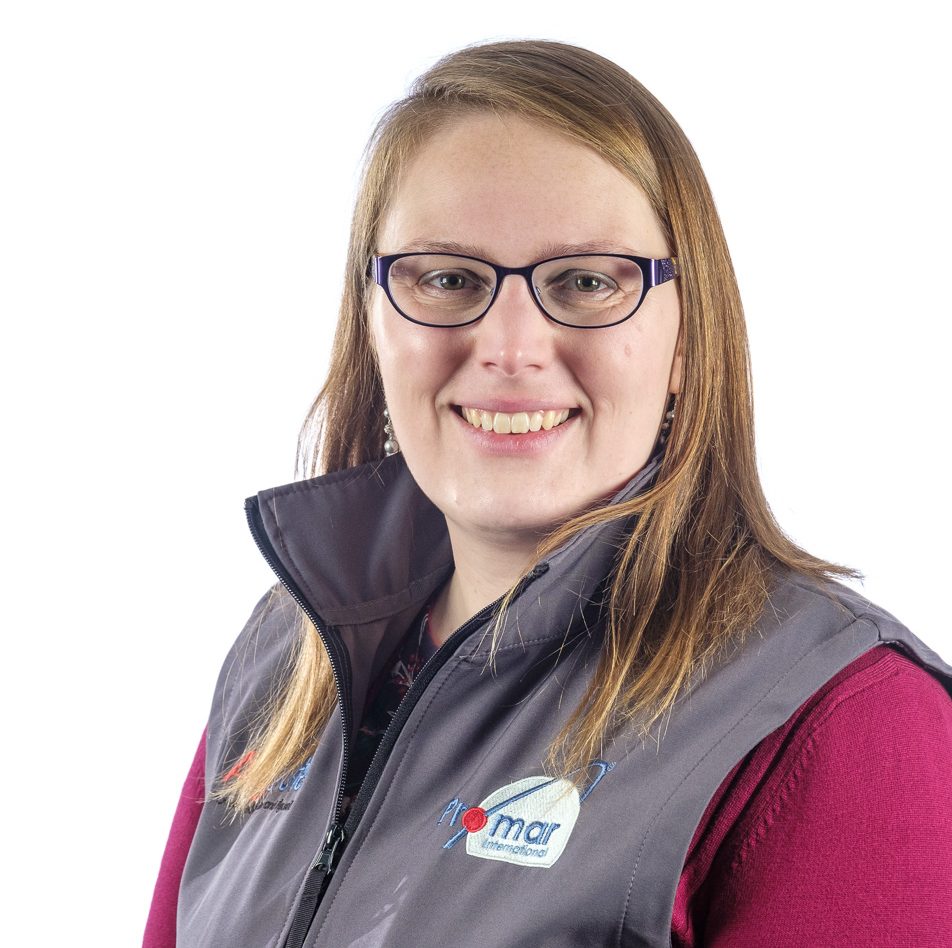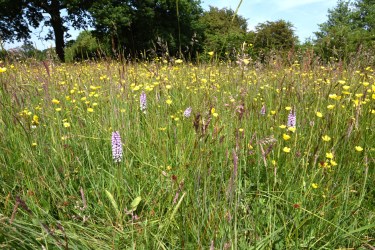Thames Water has been working for many years on projects to protect water quality in sources used to produce drinking water. To achieve this, they appoint specialist farm-consultancy services, including Promar. Our brief is to provide practical advice and information to farmers and other rural custodians, help them to access funding, and to put on educational events.
Why Thames Water Catchment Fund exists
The drinking water that Thames Water supplies must meet strict quality standards, so that it is wholesome and fit for consumption.
For Thames Water, as for many other water companies, diffuse pollution of raw water sources from agricultural pesticides and fertilisers in surface water and groundwater is an ongoing problem. These compounds are traditionally removed from water through treatment or ‘hard’ engineering solutions. But this approach is expensive and energy intensive. It is not the most sustainable option.
The most effective and sustainable way to improve the quality of rivers and underground aquifers is by good catchment management. In other words, by working with farmers to keep pesticides and fertilisers in the fields, and out of watercourses and aquifers.
Ultimately, if this approach is successful, it creates a win-win situation: water companies don’t have to rely so much on expensive, energy intensive treatment processes to produce wholesome drinking water, and agricultural chemicals stay in the fields doing the job you need them to do.
Promar’s target catchments
Broadly, our brief from Thames Water is to help farmers achieve their aims to improve water quality and to reduce pesticide and nitrate pollution coming from their land. This includes cutting pesticide run off from arable fields and lowering nitrate contamination of groundwaters at livestock farms.
If you are a farmer, speak to us if you operate in the areas shown on this map (annotated in the table beneath). For this project, your Promar specialists are Lauren Busby and Navjot Gill.

| Catchment | Catchment type | Water quality target(s) |
| Hungerford (6), Leckhampstead (7), Sheeplands (8) | Groundwater | Nitrate |
| Westerham (9), Wilmington (10), Green St Green & Lane End, Southfleet (11) | Groundwater | Nitrate |
| Lower Windrush (20), Great Brook and Thames to Farmoor (21) | Surface water | Pesticides |
| Upper Cherwell (including Ashby Brook) (24), Hanwell Brook and Middle Cherwell (25), Tadmarton Stream (26), Lower Cherwell (27) | Surface water | Pesticides |
| Upper and Lower Oxon Ray (28 & 29) | Surface water | Pesticides |
| Ock (30) and Wantage (12) | Surface water (Ock) and groundwater (Wantage) | Pesticides (Ock) and nitrate (Wantage) |
| Thames to Thame and nearby tributaries (31), Upper Thame (32), Middle Thame (33), Lower Thame (34) | Surface water | Pesticides |
| Enborne (35), Lower Kennet and Sulham Brook (36), Foudry Brook (37) | Surface water | Pesticides |
| North Wey (38), Slea and Bucks Horn Stream (39), Cranleigh Waters and Compton Stream (40), Tillingbourne (41) | Surface water | Pesticides |
In Thames Water areas not shown above, other farm specialist companies have been nominated. You can find out your nominated specialist by looking in the Catchment Fund Handbook – Additional information document, below. You can jump to that info by clicking this link.
Free information, insights, and help
As a project partner, Promar is on-hand to offer cost-free information, insights, and advice. This gives rural businesses a fast track to up to date, best-practice advice, and assistance to achieve the outcomes they want. We work as the farmer’s advocate, always acting in their best interests.
Additionally, we support with making applications to available funding streams, helping businesses to make time-efficient funding applications and speeding up the process by which they can gain funds.
For farmers, this means less time researching, interpreting information, and applying for money, and the fastest possible route to achieving optimal outcomes.
All the work that we do is in response to requests from farmers. We work in their service, free of charge, to provide data-driven technical advice that enables our partners achieve the outcomes they seek.
What type of assistance does Promar offer?
If a farmer has concerns related to potential water pollution risks, we’re happy to discuss this with them. We aim to provide farmers with information and advice to:
- Address targeted pollutants to improve water quality
- Demonstrate best management practice
- Meet or exceed regulatory requirements
Additionally, we are happy to discuss wider issues, including:
- Agri-environmental scheme applications
- Faecal contamination pathways
- Farm infrastructure audits
- Integrated pest management strategy
- Land drainage system management
- Natural flood management
- Pesticide handling, filling and washdown facilities
- Slurry, manure and silage handling and storage
- Soil and nutrient management planning
- Soil health
- Soil husbandry
- Water holding structure, design, and management
- Water resources management
Two funds are available
Thames Water is offers direct funding from two streams, to help farmers with activities and items of equipment to achieve long-term improvements. One is called the Catchment Fund, while the other is for Bespoke Water Quality Improvement Projects. We help farmers to apply for both these funds, so that they can access appropriate funding for their farms.
These funds are intended to help farmers in particular target areas to make changes that protect water, go above and beyond legal requirements, and aim for the very best practice. There are two types of target areas: pesticide target areas, and nitrate target areas.
The Catchment Fund
Thames Water started offering this in 2021, and the current fund details for 2024 are contained in the publications shown below.
The Catchment Fund – Pesticide options
The Catchment Fund – Nitrate options
The Catchment Fund – Additional information
In this document you will find funding rates and details of who to contact about the Catchment Fund in your area, including Promar specialists Lauren Busby and Navjot Gill. It includes maps of target areas, the water quality issues in each target area, and the funding rates currently on offer for each option.
The maximum funding you can apply for is £15,000 per farm business.
Bespoke water quality improvement projects
This is an additional funding stream, offering money for a range of opportunities. It provides the same funding rates as the Catchment Fund, but up to £40,000 per farm business for “activities which address the most significant risks to water quality in your local catchment in the long term”. To qualify, you must demonstrate that your activity will give benefits over at least five years.
There’s more information in this short Bespoke Water Quality Improvement Projects document.
To find out more about what you can apply for, check the Catchment Fund Handbooks and the Bespoke Water Quality Improvement Projects, or contact our specialists.
The Catchment Fund and Bespoke Water Quality Improvement Projects have specified deadlines by which you must make your applications. At the time of writing, the next deadlines are:
- Catchment Fund: 31st May 2024
- Bespoke Water Quality Improvement Projects: 30th November 2024
Are you looking for advice?
Contact us if you have any questions about Thames Water Catchment Fund, the Bespoke Water Quality Improvement Projects, or anything to do with improving the water quality of your farm. We can help you with any enquiry, and help you to achieve your farming aims. Simply email us at GB-ThameswaterPromar@genusplc.com








